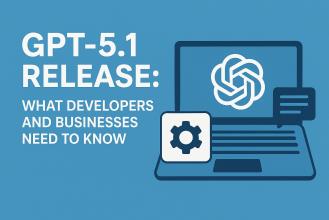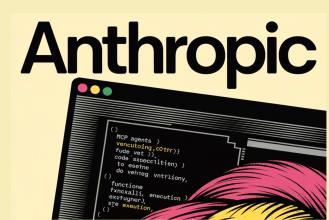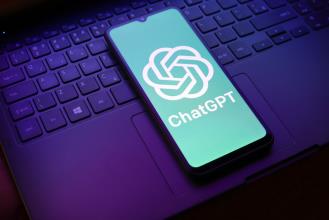GPT-5 Claims: Is ChatGPT Now 'PhD-Level' — What That Means
- 10 November, 2025 / by Fosbite
Introduction: GPT-5 arrives with big claims
OpenAI has announced GPT-5, the newest iteration of the company’s large language model update 2025, billed as "smarter, faster, and more useful." The company even suggests it can deliver expertise comparable to a PhD-level specialist in many domains. Sam Altman framed the release as a milestone — and sure, that’s exciting. But does the substance match the headline? From covering AI for years, I’ve learned to read these launches like a blend of real progress and marketing flourish. This piece walks through OpenAI GPT-5 capabilities, the practical limits (hint: still there), and what developers, businesses, and creators should actually do about it. Try this ChatGPT GPT-5 explained guide for more background.
What OpenAI says GPT-5 can do
OpenAI’s messaging focuses on a few concrete improvements:
- Improved reasoning: they call it a reasoning model — better at showing working, inference, step-by-step problem solving rather than only serving polished final answers.
- Stronger coding assistance: pitched as a GPT-5 coding assistant that can help build end-to-end software and act like a more reliable pair-programmer. For practical coding workflows, see our article on AI coding assistant.
- Fewer hallucinations: claims of reduced hallucination AI, meaning the model is supposed to invent fewer facts and be more honest about uncertainty.
- More human-like interaction: responses that feel closer to speaking with a subject-matter specialist — conversational, explanatory, and sometimes even reflexive.
OpenAI is clearly aiming to position GPT-5 both as a productivity multiplier and an expert aide — which matches search intent for queries like "ChatGPT GPT-5 explained" and "GPT-5 release 2025." Still — and this is important — marketing and capability are different beasts.
How significant are the "PhD-level" claims?
Altman’s analogy mapped earlier GPT versions to schooling levels: GPT-3 as high-school, GPT-4 as college, GPT-5 as PhD-level. It’s a neat shorthand, but taken literally it’s risky. Experts are divided.
Prof. Carissa Véliz (Institute for Ethics in AI) reminds us: these systems mimic rather than truly emulate human reasoning. Gaia Marcus of the Ada Lovelace Institute highlights a governance gap — capability without governance is a recipe for trouble. The truth is somewhere in between: improved competence, persistent limits.
Practical interpretation
So what does "PhD-level" mean in practice — and how to judge it?
- If you ask GPT-5 to draft a literature review, it may produce structured, citation-style summaries that look sophisticated — but you still need to verify sources and the interpretation. People ask, "how to verify GPT-5 research citations?" — and the short answer is: carefully, always cross-check. For related context on verifying ChatGPT outputs and timelines, see ChatGPT GPT-5 explained.
- For coding tasks, it can generate longer, more coherent projects and explain design choices — useful for the developer workflow. But "how to audit GPT-5 generated code?" remains a key question: run tests, linters, static analysis, and security scans before deployment. Learn more about agentic coding assistants in our piece on AI coding assistant.
- In complex reasoning tasks, GPT-5 might produce clearer stepwise logic more often, which helps transparency. Yet it’s not a substitute for domain expertise in high-stakes fields (clinical or legal). If you’re wondering, "can I trust GPT-5 for clinical or legal advice?" — the safe answer is no, not without qualified human oversight.
Bottom line: better, not infallible. Use GPT-5 as an assistant — a fast, clever one — but not the final authority.
Independent reporting and user experience
Independent reviewers described the update as evolutionary, not revolutionary. The interface looks familiar, but the model "thinks harder" — in other words you get more consistent reasoning chains and fewer blatant errors. From hands-on testing with prior updates, these improvements often feel like a step-change in polish more than a sudden miracle: more thoughtful answers, less babble, but occasional confident mistakes persist.
Commercial and creative implications
There are concrete business and creator implications worth spelling out:
- Content authenticity: AI-generated content authenticity is now a real issue. As generated text becomes more convincing, platforms and publishers need better ways to verify authorship and protect creator rights. Getty Images has warned about attribution and compensation — artists and journalists are right to ask how training-data transparency will work. For more on transparency and governance, see ChatGPT GPT-5 explained.
- Developer workflows: GPT-5 can enable AI-assisted pair programming. That feels like a productivity boost — provided teams build robust code review and CI processes. The long-tail search intent "how to use GPT-5 safely for developer workflows" maps directly to adopting human-in-the-loop reviews and automated testing.
- Market competition: Anthropic, Grok, and others push back with their own capability claims. That competitive AI landscape raises questions: who verifies claims, and how do users compare models meaningfully?
Conflict and collaboration in the AI industry
Notably, tensions flared when Anthropic revoked OpenAI’s API access amid allegations of terms-of-service misuse — OpenAI says evaluating other models during development is normal. This episode illustrates how openness, competition, and proprietary protection collide in practice. The takeaway: we’re unlikely to get fully transparent, let-alone consistent, benchmarks anytime soon — vendors have incentives to guard their stacks.
Safety, governance, and the user experience
OpenAI says it’s nudging ChatGPT behavior toward safer interactions — for example, avoiding definitive answers on highly personal or emotional topics and offering frameworks instead. That design choice aligns with the broader trend of model governance and safety: reduce overreliance and encourage human judgment.
Policymakers are scrambling. Questions like "what regulations are needed for GPT-5?" and "how will GPT-5 affect content creators and copyright?" are not hypothetical. Expect pressure for clearer rules on training-data transparency, creator remuneration, and third-party safety evaluations.
Original insight: a hypothetical case
Here’s a concrete scenario I’ve been thinking about. A mid-size healthcare startup uses GPT-5 to draft patient-facing educational materials. The AI can produce readable, technically plausible text fast — which saves hours. But a subtle phrasing error about dosage or contraindications slips through, and now you’ve got a compliance and safety headache. What I actually recommend: combine GPT-5 drafts with domain expert review and automated checks for medical claims. This hybrid human-in-the-loop workflow preserves speed while limiting risk — and yes, it’s how sensible teams should integrate the tool. If you want a primer on agentic and human-assisted flows, check agentic workflows.
Takeaways: how to use GPT-5 responsibly
- Verify facts: always cross-check important claims and citations. If your job depends on accuracy, treat outputs as drafts, not final copy.
- Audit generated code: use unit tests, linters, dependency scans, and security audits. "Best practices for auditing GPT-5 generated code" is not optional. For tooling-aware approaches, our AI coding assistant article is useful.
- Respect creators: scrutinize training data sources and licensing before publishing or monetizing outputs.
- Adopt human-in-the-loop workflows: pair AI speed with human judgment — especially in medicine, law, finance, and safety-critical domains.
- Plan for governance: push for transparent model evaluation and internal policies that gate where GPT-5 can be used.
Further reading and sources
For more context, look at coverage of the Anthropic/OpenAI API dispute and OpenAI’s posts about optimizing ChatGPT. See Wired on Anthropic (Wired on Anthropic) and OpenAI’s explanation of product changes (OpenAI blog post).
Conclusion
GPT-5 is a meaningful step in the evolution of large language models — better reasoning, stronger coding assistance, and a more human-like demeanour. But calling it unequivocally "PhD-level" is an oversimplification. The model can mimic expert outputs convincingly, yet verification, regulation, and ethical use remain essential. My practical advice: test GPT-5 in low-risk workflows first, build robust review processes (technical and editorial), and press for clearer governance so capability improvements translate into societal benefit rather than unregulated risk. If you’re asking "how to integrate GPT-5 into my company safely?" — start small, require human sign-off, and iterate. For an expanded primer on ChatGPT and GPT-5 context, read ChatGPT GPT-5 explained.











